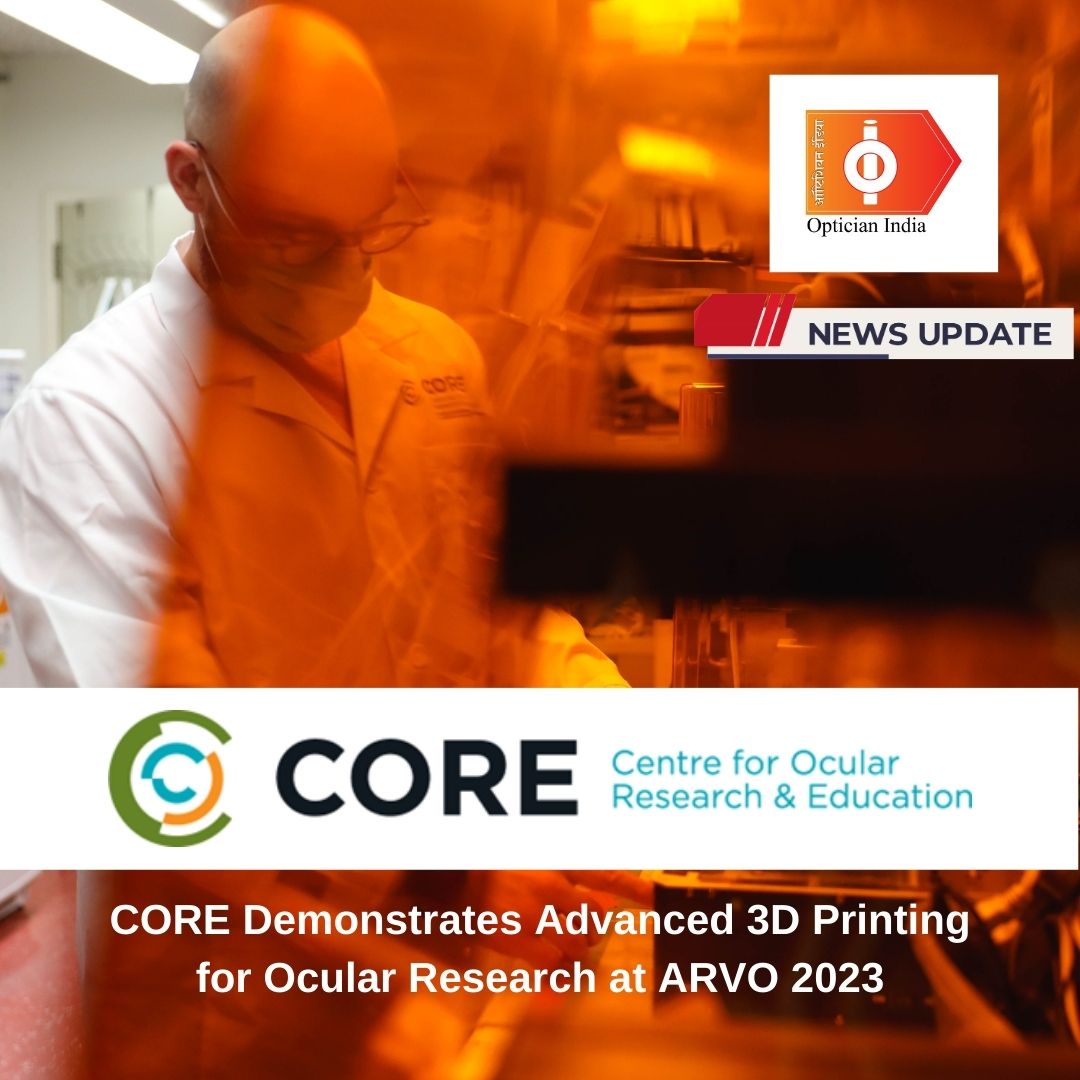CORE Demonstrates Advanced 3D Printing for Ocular Research at ARVO 2023

WATERLOO, Ontario, April 18, 2023—Scientists from the Centre for Ocular Research & Education (CORE) are poised to unveil multiple advancements in 3D printing next week during the ARVO 2023 Annual Meeting in New Orleans. These innovations have widespread applications, with the potential to accelerate development of drug delivery systems, biodegradable contact lenses, and pharmaceuticals.
“Our multidisciplinary team has created one of the most sophisticated 3D printing environments for ocular research in the world,” said Alex Hui, OD, PhD, FAAO, head of Biosciences at CORE. “This investment in people and technologies is opening doors for new discoveries, product validation, and clinical insights, with so many implications for enhancing vision.”
 |
 |
 |
CORE’s scientific poster presentations at ARVO span several interlinked aspects of three-dimensional modeling. Three related works focus on a new, CORE-developed method to rapidly fabricate PDMS (polydimethyl siloxane) microfluidic chips at a low cost and with high throughput. These chips are used to test ocular cellular responses to various conditions, formulations, and materials. Researchers were able to incorporate human corneal epithelial cells (HCECs), which showed strong adherence, metabolic activity, and growth capability, indicating the viability of chip-based cell biological studies.
CORE also fabricated a PDMS microfluidic chip for evaluating contact lens-based drug release. ARVO organizers have designated “Fabrication of a Microfluidic Chip for Ophthalmic Drug Delivery Studies Using 3D Printing” (Ramasamy M., et al.) as a scientific highlight for the entire conference.
Another CORE program to be shared in New Orleans developed a biodegradable bioink for fabricating ophthalmic devices. A novel gelatin methacrylate (GelMA)-centric formulation was used with a commercial masked-stereolithography (mSLA) 3D printer, with the resulting material assessed for degradation. Investigators also fabricated a contact lens from the same material, without requiring any support structures during printing.
In a quest to better evaluate ocular drug delivery, CORE scientists designed a soft hydrogel eye model, including an upper and lower eyelid, a frontal surface to mimic the cornea and sclera, and an internal chamber to mimic the interior of the eye. The eyeball and the lower eyelid were 3D bioprinted, then fit to a CORE-created in vitro OcuBlink device for automated blinking and tear collection. The outcomes supported the method for testing that more closely mimics a human ocular system, especially for drug absorption through the cornea.
The Association for Research in Vision and Ophthalmology (ARVO) is the largest and most respected eye and vision research organization in the world. Its members include nearly 10,000 researchers from more than 75 countries. The ARVO 2023 Annual Meeting runs from April 23–27, and attracts thousands of attendees from academic, industry, and clinical settings.

3.jpg)
5.jpg)
4.jpg)
2.jpg)

3.jpg)


1.jpg)



.jpg)
.jpg)



_(Instagram_Post).jpg)
.jpg)
_(1080_x_1080_px).jpg)


with_UP_Cabinet_Minister_Sh_Nand_Gopal_Gupta_at_OpticsFair_demonstrating_Refraction.jpg)
with_UP_Cabinet_Minister_Sh_Nand_Gopal_Gupta_at_OpticsFair_demonstrating_Refraction_(1).jpg)

.jpg)








.jpg)



.png)




